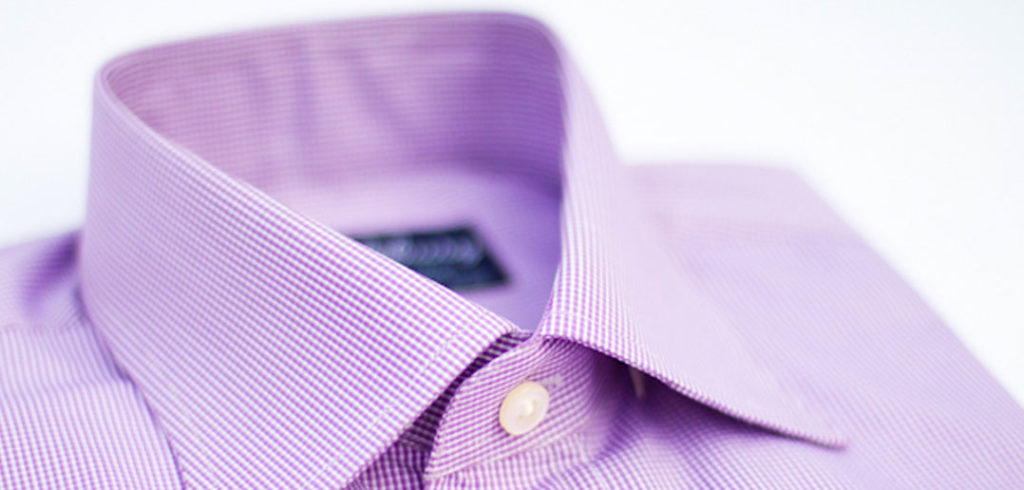Who would have thought that shirt collars can be such a big deal? Aren’t they just the same on every shirt? Surprise! Surprise! Collar styles, though such a small element of the entire shirt, plays the leading role of making that shirt look fantastic or horrible on you! Read on to find out how.
Simply put, a collar is the part of the shirt that frames the neck, and thus its shape, cut and size has a direct effect on portraying the structure of your face. The wrong collar style can accentuate facial abnormalities, making you look awkward and tardy, while the right collar style can enhance your features, making you look dapper. There are two broad types of collar styles- the turndown and the winged collars. The winged collars are always only worn with a tuxedo. However, within the turndown collars, there is a huge variety, so we have grouped them into three distinct categories.
Turndown Collar Styles That Differ in their Tips
Turndown collar styles that differ in their tips are commonly called the collar points. The largest majority of men’s dress shirt collars have a pointed tip, called the Straight Point Collars. This neutral collar style can be worn with any suit and in any style, making it extremely versatile (as well as boring). Variation to the point collar comes in terms of its spread (discussed next) and its length. A moderate length encompasses the tie to give an arrow-pointing-at-the-face effect, while longer more closely set points tend to have an elongating effect that draws the eye away from the face. A long point collar style is therefore most suitable for shorter and rounder men, but it’s a big NO-NO for tall and thin men.
Turndown Collar Styles that Differ in their Spread
Turndown collar styles that differ in their spread are referring to the distance between collar points. Unlike the straight point collars seen on most shirts, the spread collars have their points cut away so that more of the shirt is revealed. This also makes it more suitable for bigger tie knots. This type of collar style has a widening effect, thus, is most appropriate for men with thinner and taller faces. Men with rounder faces can manage the narrow to moderate spread collars but should avoid wearing ties.
Like the point collars, spread collars vary in their spread and length. The Moderate Spread Collar is the closest to the regular point collar except that it is slightly more flared. This type is meant for the shy men who are just venturing out. The Wide Spread Collar also known as the Windsor or Classic originated from the English royalty. The Spread Collar adds individuality to personal style and creates a confident impression.
A Wide Spread Collar Shirt
Turndown Collar Styles that are Held in Place
Button Down Collar Shirt
Did you know that the Button-down Collar was inspired by the polo shirt in England? Hence, this type of collar, which is held down to the shirt with small buttonholes at the points to prevent flapping, is associated with less dressy shirts. It goes perfectly with a sports jacket for a smart casual event. For a more professional look, this type of collar will look great with a bowtie, and even a tie. The only caveat to this collar type is that it must never be worn with the buttons undone.
The Tab Collar has a buttoned or snap connection in the middle that pulls the two collar points closer together. The tab creates a snug fit for the tie knot and pushes it forward. This type of collar cannot be worn without a tie and is most suitable for men with extra long faces as the tie takes the attention away.
The Eyelet and Pinned Collars are held together with a decorative collar pin that connects the points behind the tie. This type of collar accentuates the tie knot, and therefore, looks better on men with a medium to long necks. Regarded as dressy, this collar type is associated with the fashion-conscious men who clearly make an effort to stand out with stylish collar pins. It is a bold collar meant for the confident men who can thrive in the extra attention.
Eyelet Collar
Pinned Collar
Key Takeaway about collars you should know
- The first step in knowing different collar styles is knowing your facial features in determining what collars you can and cannot wear
- Stay away from collars that are the same shape as your facial structure so as not to accentuate the wrong features
With that simple rule in mind, explore away!
